China automotive vision research: DMS is booming, with the installations soaring 141.8% year-on-year
1. China will install 75.4 million cameras in 2025
According to ResearchInChina, China installed 20.624 million cameras in new cars in 2022H1, a year-on-year increase of 11.8%. By market segments, the installations of front view cameras increased by 20.4% year-on-year to 3.499 million units in 2022H1; the installations of surround view cameras jumped by 22.7% year-on-year to 10.735 million units; the installations of rear view cameras decreased by 18.8% year-on-year to 4.52 million units; the installations of DMS cameras swelled by 141.8% year-on-year to 384,000 units; the installations of driving recorders ascended by 39.7% year-on-year to 1.486 million units.

China will install 75.4 million cameras in 2025 under the impulse of following factors:
1) Policies
The state and cities have actively launched policies related to autonomous driving in order to promote development and commercialization of autonomous driving industry. On March 1, 2022, China officially implemented "Autonomous Driving Classification” as a new national standard. On August 1, Shenzhen officially enforced "Regulations on Administration of Intelligent Connected Vehicles in Shenzhen Special Economic Zone", allowing fully autonomous vehicles to hit the road. On September 5, Shanghai issued "Implementation Plan for Accelerating Innovation and Development of Intelligent Connected Vehicles in Shanghai", stipulating that Shanghai should initially build a leading domestic innovation and development system for intelligent connected vehicles by 2025.
2) OEMs
In 2022H1, 2.877 million vehicles boasted L2+ functions, accounting for 32.4% which jumped 12.6 percentage points year-on-year. In particular, the installation rate of L2.5 and L2.9 ticked up dramatically. Many OEMs are deploying L3 and higher-level autonomous driving. In the later stage, autonomous driving above L2.9 will become standard.

Traditional OEMs deploy autonomous driving by partnering with technology companies or launching new brands. For example, BYD teamed up with NVIDIA and Baidu in February and March 2022 respectively. NVIDIA will provide intelligent driving technology, and Baidu will offer a complete solution for L3 intelligent driving. In March 2022, GAC released its new electric brand “e:NP” and the first battery-electric vehicle “e:NP1” under the brand to embody "electrification". The vehicle enables L3 intelligent driving.
Emerging automakers focus on independent development. NIO, Li Auto and Xpeng have successively embarked on full-stack self-research of software and algorithms. Xpeng’s full-stack self-developed XPilot driving assistance system has continuously upgraded. Currently, XPilot 3.5 can make L3 autonomous driving possible. XPilot 4 is now available on G9, and it is scheduled to complete the transition to autonomous driving in 2026.
2. 2022H1, Bosch, Denso, and Aptiv enjoyed 52.28% share of the front view camera market, and Chinese local player Jingwei Hirain Technologies was shortlisted in the top ten
In 2022H1, Chinese front view camera market for new passenger cars was mainly occupied by foreign suppliers like Bosch, Denso, and Aptiv. Bosch grasped the market share of 25.12% by serving BYD, Honda, BMW, Changan, etc. Denso secured the market share of 19.09% as a partner of Toyota. The market share of Aptiv whose main customers included Volvo, GAC, SAIC, etc. hit 8.27%.
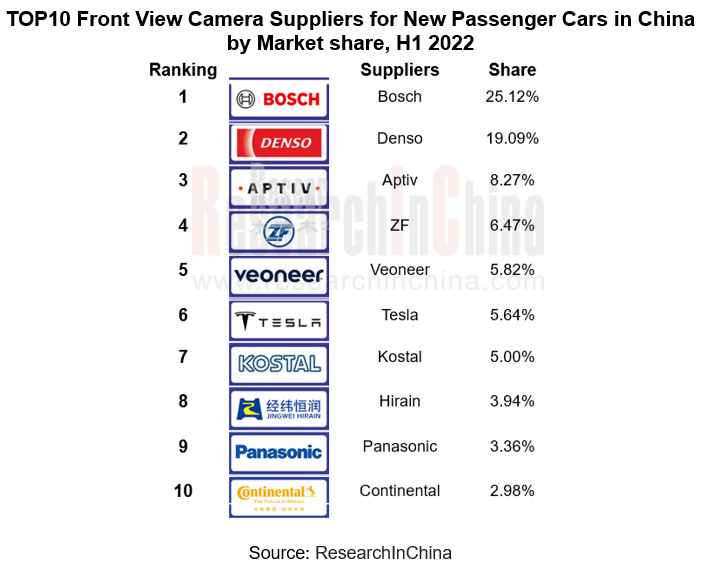
Jingwei Hirain Technologies is the only Chinese local company that ranked among the top 10 front view camera suppliers for new passenger cars in China. Established in 2003, Jingwei Hirain Technologies entered ADAS field in 2016, mainly serving OEMs such as SAIC, FAW, Geely, etc.. Its main products include ADCU, ADAS, LMU, DMS, T-BOX, GW, etc., among which ADAS cameras have evolved to the fifth generation. In the future, a new generation of super-high-computing-power intelligent driving domain controllers, intelligent cockpit perception controllers, 3D cameras and other new products will be developed for domestic chips or foreign higher-computing-power chips, ISP technology, and in-cockpit three-dimensional perception technology.
3. The 8-megapixel era of automotive cameras began
As autonomous driving levels up, the demand for automotive cameras is reflected in perception lenses instead of imaging lenses, and the application scenarios have expanded from simple scenarios to multi-directional scenarios. Besides, the system has higher and higher requirements for camera resolution. Driven by market demand, 8-megapixel cameras with higher definition, wider field of view and longer detection distance are more and more favored by OEMs.
Of the models launched in 2022, those with 8-megapixel cameras account for a higher proportion than before. For example, Li L9 and NIO ES7 unveiled in June 2022 are equipped with 11 cameras each; specifically, Li L9 has six 8-megapixel cameras, and NIO ES7 boasts seven 8-megapixel cameras. WM M7, which will debut in 2022Q4, will feature a total of 11 cameras (including seven 8-megapixel cameras) which cover all scenarios ranging from parking in compounds, urban roads to intercity expressways.
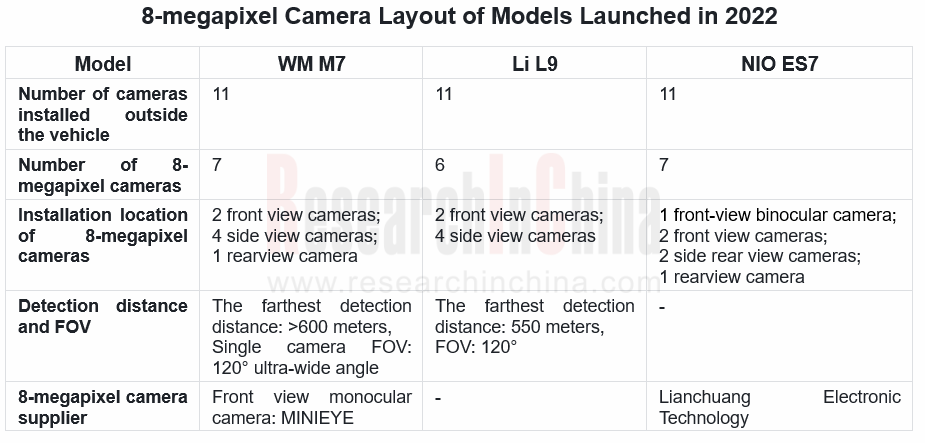
With the support of OEMs for assisted driving functions, suppliers have begun to vigorously deploy R&D and production of high-resolution camera modules. For example, the third-generation front view camera FVC3 released by Freetech in August 2022 has 8 megapixels, the farthest vehicle detection distance of 250 meters, and the farthest pedestrian detection distance of 120 meters. It bolsters Navigate on Autopilot (NOA) on expressways and recognition of Chinese traffic signs and scenarios.
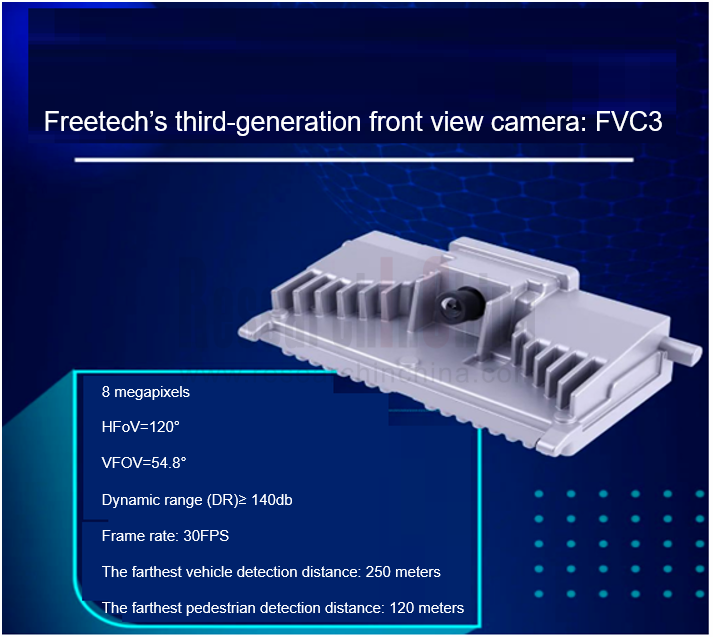
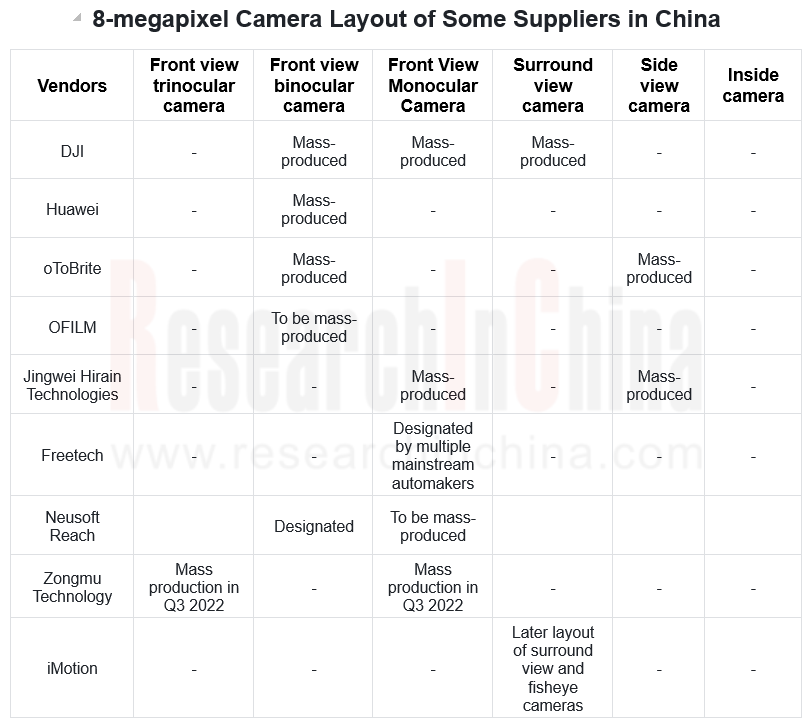
4. 3D Sensing Technology
3D sensing is a depth sensing technology that can measure and collect the height, depth and shape of objects. Compared to traditional solutions, 3D ToF can capture depth and infrared images under harsh lighting conditions with a higher lens frame, which is more suitable for dynamic scenarios. At present, 3D sensing technology is mainly used in the interior of the cockpit, such as DMS.
As the mainstream technical solutions of 3D sensing, structured light and ToF technology have become the hotspots of major automotive lens vendors for technical breakthrough. OFILM is currently the main supplier of 3D sensing modules in China. In 2017, OFILM made a layout in this field, and developed structured light and ToF solutions simultaneously. It took the lead in the mass production of automotive ToF visual perception modules for AITO M5 released in March 2022 as a pioneer in the automotive industry.
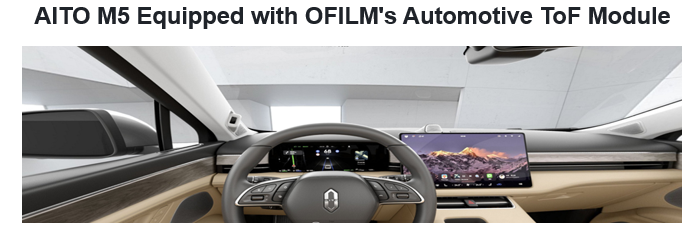
ArcSoft's latest 3D ToF gesture interaction technology debuted on Li L9 in June 2022.
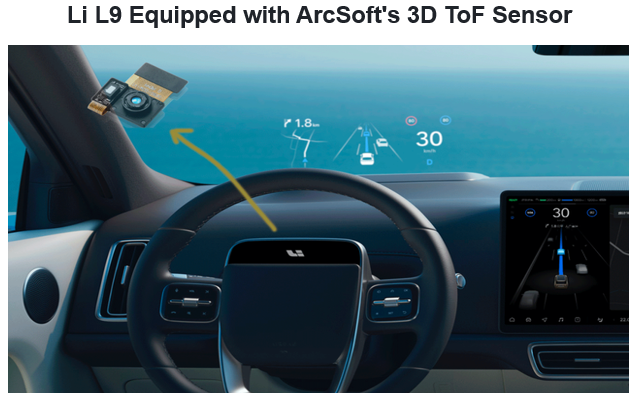
Oradar will release its 3D ToF smart cockpit solution in September 2022.
5. As an important part of smart cockpit, DMS/OMS will see a surge in installations
In 2022H1, DMS installations swelled by 141.8% year-on-year to 384,000 units. The current mainstream DMS solutions can be divided into cockpit integrated solutions and independent hardware solutions. Integrated cockpit solutions offer rich functions and mobile phone interconnection in terms of entertainment functions and social media functions. Independent hardware solutions can meet the requirements of L2+ and L3 autonomous driving in view of functional safety level, and effectively monitor the state of human-machine co-driving.
Mainstream providers of independent hardware solutions include Neusoft Reach, Suzhou INVO, OFILM, and Hikvision. In particular, Neusoft Reach's independent hardware DMS solution has conducted functional safety development in accordance with ISO2 6262 ASIL-B in terms of system, hardware and software, and has realized deployment of full-chain information security modules on controller, vehicle, cloud, and mobile phone. Combined with L3 intelligent driving domain controller of vehicle, it has been mounted on mainstream models of many automakers.
In the future, when autonomous driving technology enters an advanced stage and people need not act as drivers, the scenario application of smart cockpit will become more important. The key to the perfect user experience depends on cockpit-driving integration. Therefore, a number of domestic vision suppliers have launched solutions that integrate the interior and exterior of the cockpit.
In April 2022, Desay SV released automotive intelligent computer "Aurora", marking the company's leap from a domain controller to a central computing platform. This cockpit-driving fusion solution, based on multiple SoCs, integrates multiple functional domains such as intelligent cockpit, intelligent driving, and connected services at the functional level.
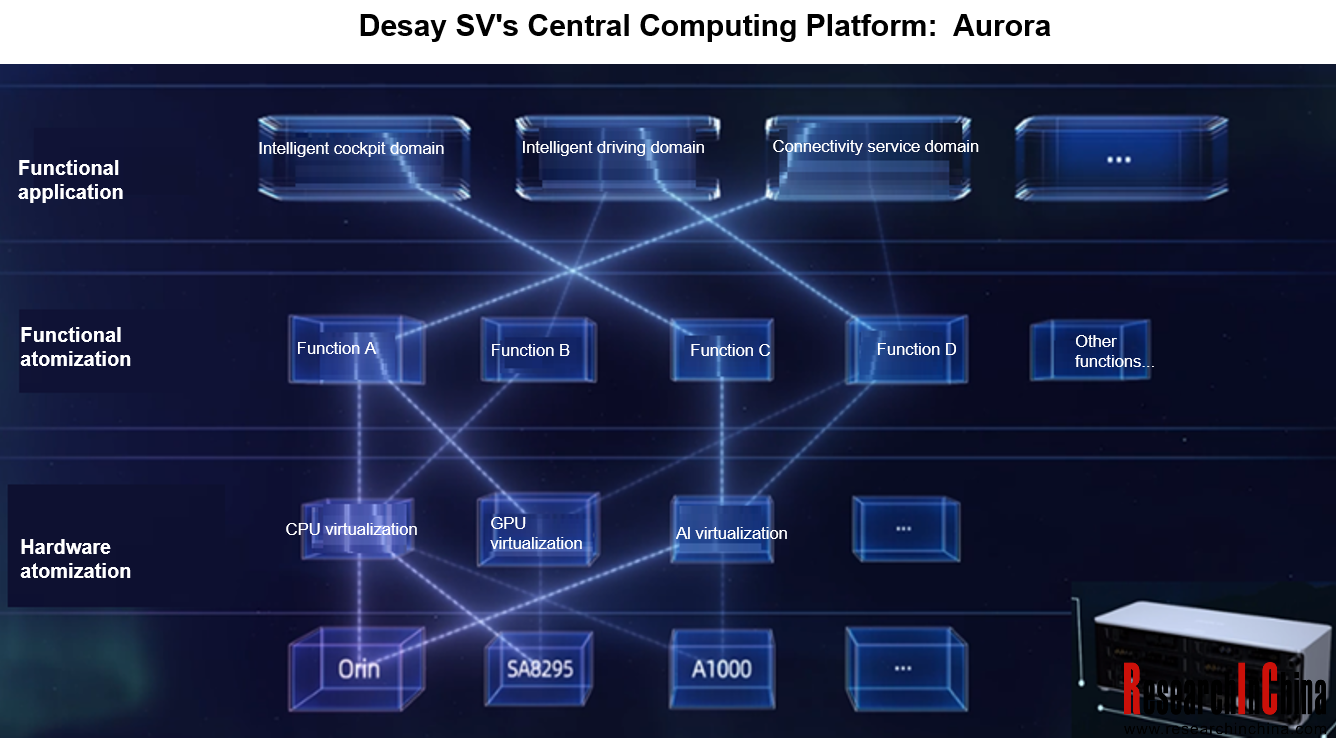
In June 2022, Jidu Auto launched a "robot" concept car. Based on self-developed SOA cockpit-driving fusion technology architecture, it allows computing power sharing, perception sharing, and service sharing. The intelligent cockpit domain controller can support system-level security redundancy when the intelligent driving system fails, and the intelligent driving domain controller enables AI interaction of intelligent cockpit 3D human-machine co-driving map.
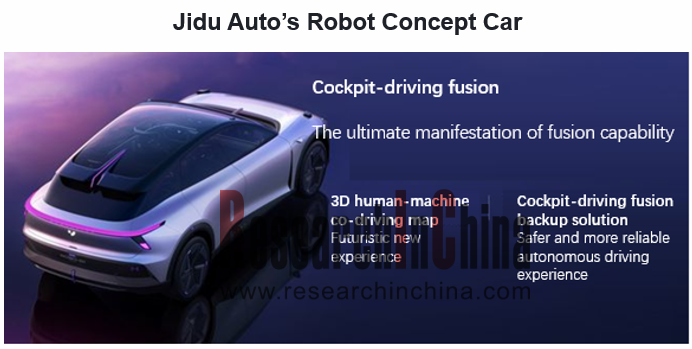
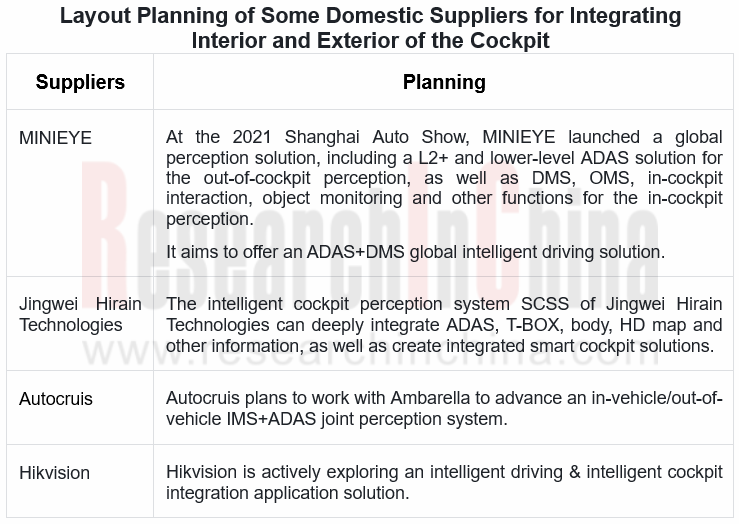
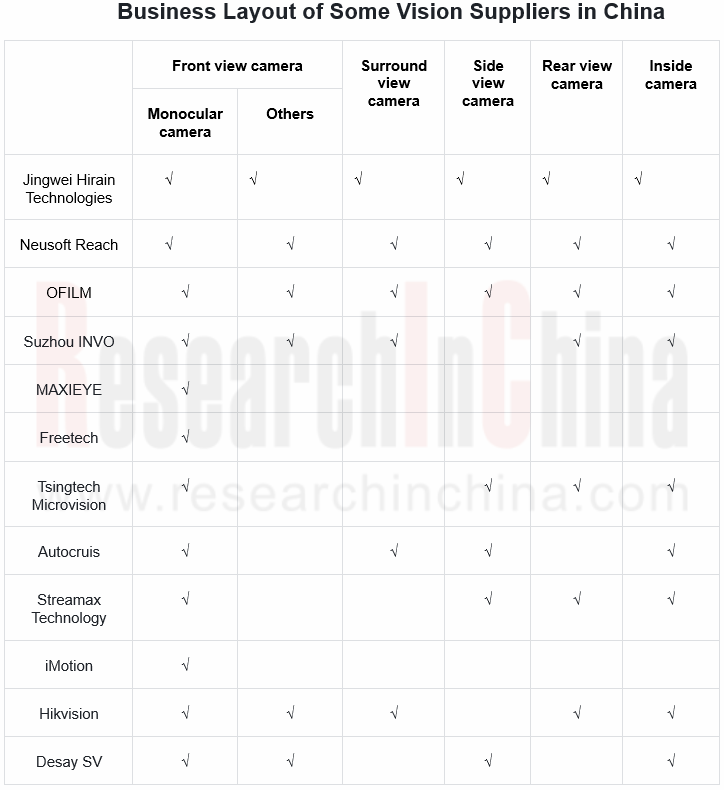
Autonomous Driving Domain Controller and Central Computing Unit (CCU) Industry Report, 2025
Research on Autonomous Driving Domain Controllers: Monthly Penetration Rate Exceeded 30% for the First Time, and 700T+ Ultrahigh-compute Domain Controller Products Are Rapidly Installed in Vehicles
L...
China Automotive Lighting and Ambient Lighting System Research Report, 2025
Automotive Lighting System Research: In 2025H1, Autonomous Driving System (ADS) Marker Lamps Saw an 11-Fold Year-on-Year Growth and the Installation Rate of Automotive LED Lighting Approached 90...
Ecological Domain and Automotive Hardware Expansion Research Report, 2025
ResearchInChina has released the Ecological Domain and Automotive Hardware Expansion Research Report, 2025, which delves into the application of various automotive extended hardware, supplier ecologic...
Automotive Seating Innovation Technology Trend Research Report, 2025
Automotive Seating Research: With Popularization of Comfort Functions, How to Properly "Stack Functions" for Seating?
This report studies the status quo of seating technologies and functions in aspe...
Research Report on Chinese Suppliers’ Overseas Layout of Intelligent Driving, 2025
Research on Overseas Layout of Intelligent Driving: There Are Multiple Challenges in Overseas Layout, and Light-Asset Cooperation with Foreign Suppliers Emerges as the Optimal Solution at Present
20...
High-Voltage Power Supply in New Energy Vehicle (BMS, BDU, Relay, Integrated Battery Box) Research Report, 2025
The high-voltage power supply system is a core component of new energy vehicles. The battery pack serves as the central energy source, with the capacity of power battery affecting the vehicle's range,...
Automotive Radio Frequency System-on-Chip (RF SoC) and Module Research Report, 2025
Automotive RF SoC Research: The Pace of Introducing "Nerve Endings" such as UWB, NTN Satellite Communication, NearLink, and WIFI into Intelligent Vehicles Quickens
RF SoC (Radio Frequency Syst...
Automotive Power Management ICs and Signal Chain Chips Industry Research Report, 2025
Analog chips are used to process continuous analog signals from the natural world, such as light, sound, electricity/magnetism, position/speed/acceleration, and temperature. They are mainly composed o...
Global and China Electronic Rearview Mirror Industry Report, 2025
Based on the installation location, electronic rearview mirrors can be divided into electronic interior rearview mirrors (i.e., streaming media rearview mirrors) and electronic exterior rearview mirro...
Intelligent Cockpit Tier 1 Supplier Research Report, 2025 (Chinese Companies)
Intelligent Cockpit Tier1 Suppliers Research: Emerging AI Cockpit Products Fuel Layout of Full-Scenario Cockpit Ecosystem
This report mainly analyzes the current layout, innovative products, and deve...
Next-generation Central and Zonal Communication Network Topology and Chip Industry Research Report, 2025
The automotive E/E architecture is evolving towards a "central computing + zonal control" architecture, where the central computing platform is responsible for high-computing-power tasks, and zonal co...
Vehicle-road-cloud Integration and C-V2X Industry Research Report, 2025
Vehicle-side C-V2X Application Scenarios: Transition from R16 to R17, Providing a Communication Base for High-level Autonomous Driving, with the C-V2X On-board Explosion Period Approaching
In 2024, t...
Intelligent Cockpit Patent Analysis Report, 2025
Patent Trend: Three Major Directions of Intelligent Cockpits in 2025
This report explores the development trends of cutting-edge intelligent cockpits from the perspective of patents. The research sco...
Smart Car Information Security (Cybersecurity and Data Security) Research Report, 2025
Research on Automotive Information Security: AI Fusion Intelligent Protection and Ecological Collaboration Ensure Cybersecurity and Data Security
At present, what are the security risks faced by inte...
New Energy Vehicle 800-1000V High-Voltage Architecture and Supply Chain Research Report, 2025
Research on 800-1000V Architecture: to be installed in over 7 million vehicles in 2030, marking the arrival of the era of full-domain high voltage and megawatt supercharging.
In 2025, the 800-1000V h...
Foreign Tier 1 ADAS Suppliers Industry Research Report 2025
Research on Overseas Tier 1 ADAS Suppliers: Three Paths for Foreign Enterprises to Transfer to NOA
Foreign Tier 1 ADAS suppliers are obviously lagging behind in the field of NOA.
In 2024, Aptiv (2.6...
VLA Large Model Applications in Automotive and Robotics Research Report, 2025
ResearchInChina releases "VLA Large Model Applications in Automotive and Robotics Research Report, 2025": The report summarizes and analyzes the technical origin, development stages, application cases...
OEMs’ Next-generation In-vehicle Infotainment (IVI) System Trends Report, 2025
ResearchInChina releases the "OEMs’ Next-generation In-vehicle Infotainment (IVI) System Trends Report, 2025", which sorts out iterative development context of mainstream automakers in terms of infota...